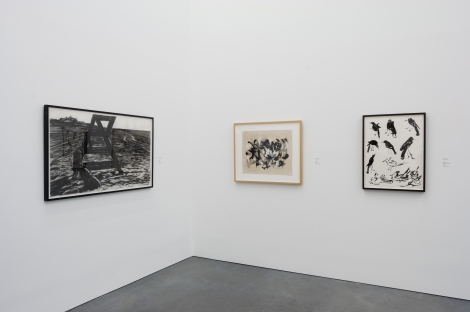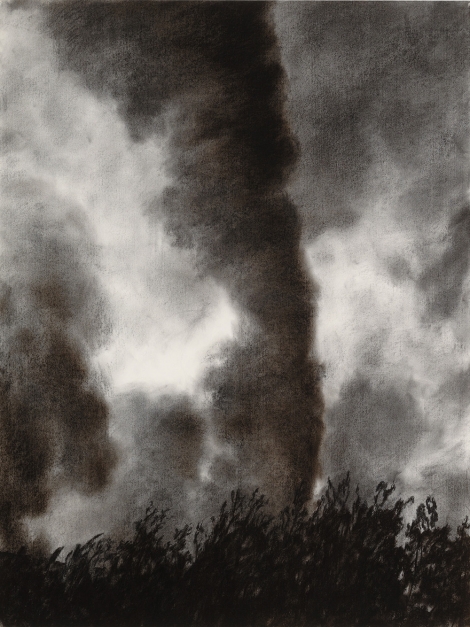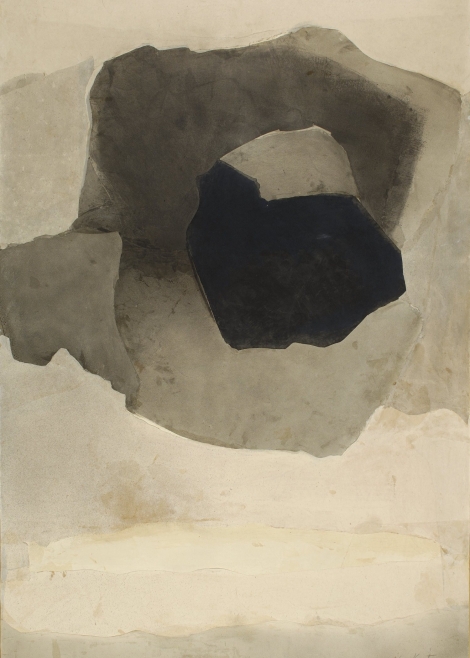Drawn in Black and White
Permanent Collection Installation
November 4, 2016–October 30, 2017
Drawing is a basic element of art—a foundational pursuit used by artists not only as a preliminary study for a painting or sculpture, but also as a medium explored in its own right. If drawing is fundamental to the creative process, then drawing in black and white is even more elemental, reducing the options to a limited number. The works gathered here in Drawn in Black and White show that setting limits can be liberating, encouraging artists to fully explore new methods and materials.
April Gornik, known for her large and colorful landscape painting (an example of which can be seen in Gallery 6, American Views), deftly uses the medium of charcoal to attain lush impressions of water and trees. For the study Montauk, L.I., Ellen Phelan employs the physical properties of gouache, an opaque rather than transparent form of watercolor, to achieve atmospheric effects.
Sculptor Mark di Suvero often draws to work out an idea for sculpture on paper. “It’s easier to make your mistakes on paper than it is in steel,” he has said, and his lyrical drawing in watercolor and ink conveys the grace of his monumental works. Bryan Hunt’s oil stick, watercolor, and ink drawing on handmade paper combines the delicacy of watercolor and the heft of oil stick to evoke the mass of his sculpture.
The expressionistic, abstract gestures that motivate many paintings take new form in works such as Norman Bluhm’s drawing that combines the physical properties of ink and gouache to show the drips, stains, and flow of abstract-expressionist gesture. Similarly, Susan Rothenberg’sUntitled reveals the physical exertion and reworking that goes into the drawing, here using charcoal, oil, and pencil.
As a young artist in 1940s New York, Robert Motherwell was introduced by the French Surrealists to the practice of “spontaneous” or “automatic” drawing, where the hand is allowed to move randomly across the paper as a means to expressing the subconscious. Spontaneity No. 3 is from a 1960s series of rapidly brushed drawings in ink on identical sized Japanese rice paper. Abstract-expressionist James Brooks did not make drawings in preparation for paintings but used them as another arena for experimentation, seen here in an untitled oil and gouache on paper. Growing up in Madrid, Esteban Vicente was often taken by his father to the Prado museum, home to one of the finest collections of art in the world. Like the great Spanish masters Velázquez and Goya whose work he saw there, Vicente made a color of black, on view here in the painted and collaged elements of Black Susan.
Coming from a more representational point of view, Billy Sullivan has called his work “a sort of diary,” and in his drawing 10/22/91 3:15 PM 3:50 PM, we know the exact time that he was looking outside his East Hampton window observing his avian neighbors, using brush and ink as the perfect means to convey their energy. Figures on a beach have long attracted Graham Nickson, who approaches this traditional subject with robust gesture and rigorous hand.




